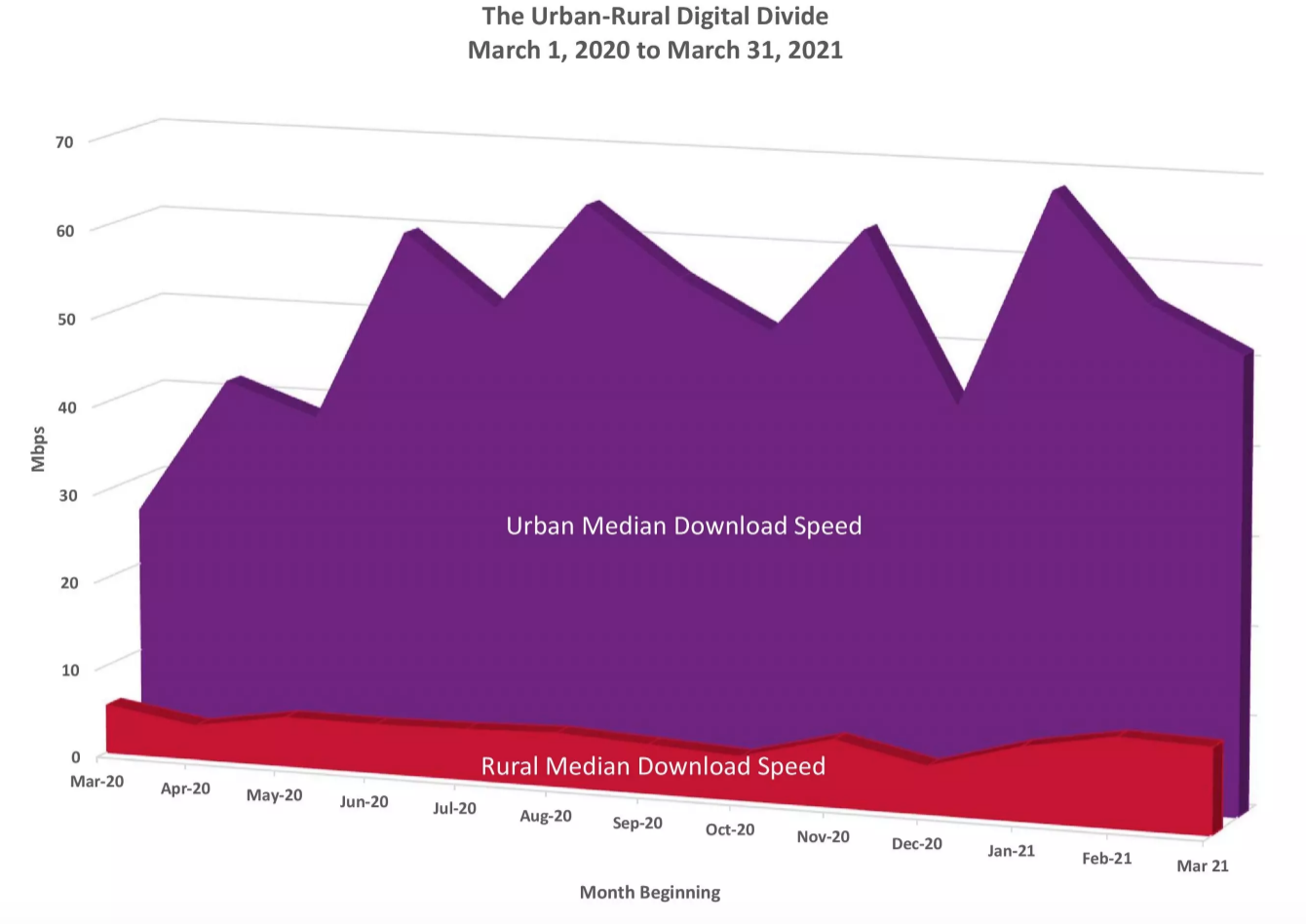
New data from the Canadian Internet Registration Authority (CIRA) shows that rural internet users still significantly lag behind urban users when it comes to speed.
The new report says that since the start of the pandemic, rural speeds have been between one-fifth and one-tenth of urban speeds. Rural download speeds hovered around 5.5Mbps, while urban speeds hovered around 50Mbps.
Interestingly, the report outlines that internet speeds in urban areas have seen a significant improvement over the past year.
“Measured urban download speeds have nearly doubled since the start of the pandemic. In March 2020, the median download speed was 26.16Mbps, compared to 51.09Mbps in March 2021,” CIRA notes.
During the same period of time, median speeds in rural areas increased to 9.74Mbps. CIRA notes that this disparity between speeds has grown substantially amid the pandemic.
“As lockdowns took hold and Canadians worked increasingly from home, city dwellers benefited from big improvements, while those living in the country had to cope with speeds that improved at a much slower rate,” the report states.
CIRA notes that the gap slowly began to close in December when rural speeds began to show steady improvement.
“As we’ve seen in the pandemic, internet access is an essential service and an issue of social equity,” said CIRA CEO Byron Holland, in the report.
“Whether it’s virtual health care, virtual schooling, or virtual office work, it’s not right that many people who live in the country don’t have broadband that’s at least comparable to what’s available in cities.”
CIRA says that it welcomes recent funding announcements from the government and the Canadian Radio-television and Telecommunications Commission (CRTC) and will continue to monitor improvements.
The data from the report was collected using CIRA’s Internet Performance Test. The results were gathered between March 1st, 2020 and March 31st, 2021 from a total of 198,921 urban tests and 137,158 rural tests.



